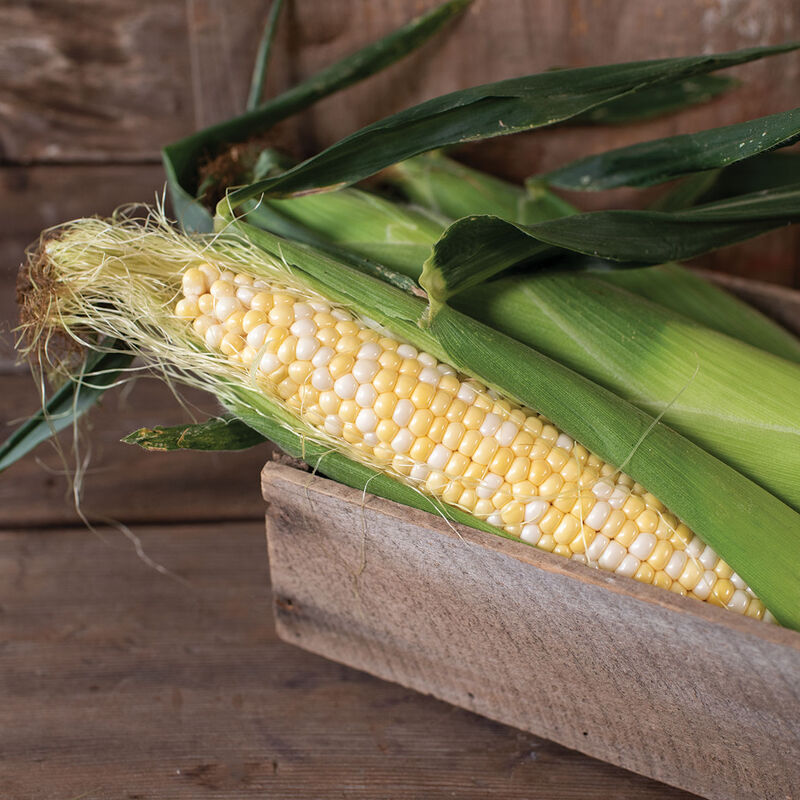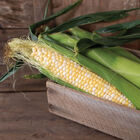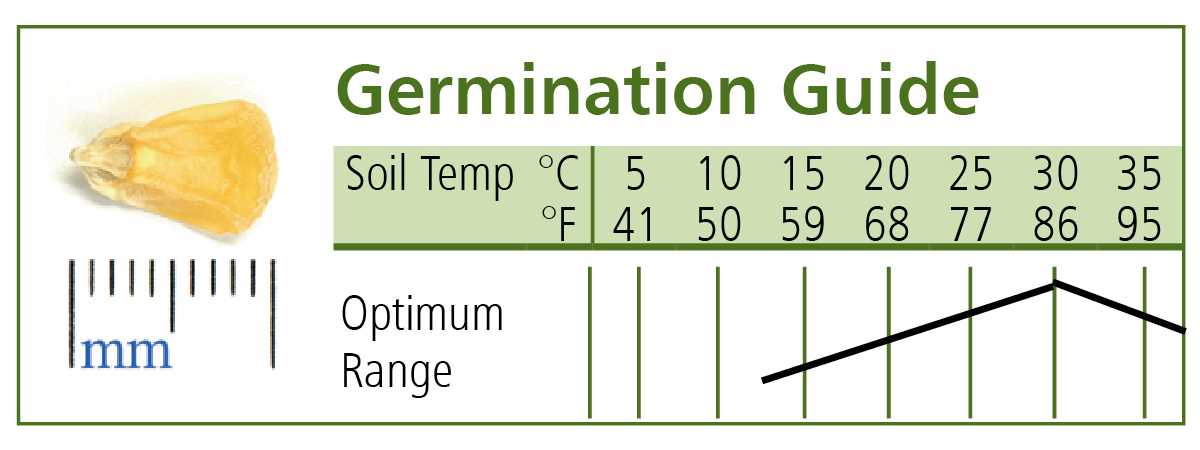Latte 1r (F1) Corn Seed
Latte 1r (F1) Corn Seed
Reliable first-early synergistic (syn) producer. Conventional seed with NOP-compliant Organic 1r treatment.
Sweet and tender with plenty of traditional corn flavor. Excellent cool-soil emergence and seedling vigor, essential for the first-early slot. A long husk provides excellent protection against birds. 6' tall plants.About Organic 1r Seed Treatment: Organic 1r treatment is a biologically-derived coating that helps protect germinating seed from pathogens and improves nutrient uptake in young roots. Our trials have shown greatly improved stands in sweet corn and other crops across a broad spectrum of climates and soil types. Results may vary depending on soil and weather conditions. Most biologically-derived treatments provide the greatest benefit in soils that are intensively cropped and/or depleted. NOTE: Seed treated with Organic 1r may appear darker in color.Disease Resistance:
Specs:
- This product does not ship to the following countries: Australia, Japan, Republic of Korea, New Zealand, Thailand, Taiwan.
SCIENTIFIC NAME:
Zea maysCULTURE:
Planting in cold soil risks poor germination. Plant untreated seeds when soil is warm, at least 65°F (18°C). Plant treated seed when soil temperature is at least 60°F (16°C). Only treated seeds of good cold-germinating varieties may be sown in 55°F (13°C) soil and only if warmer weather is anticipated. Floating row covers may be used on early plantings to help moderate soil temperature.DAYS TO MATURITY:
From date of direct seeding, though maturity dates will vary widely with weather conditions and planting dates. Use these figures to compare one variety to another, not to accurately predict maturity on a given day.ISOLATION REQUIREMENTS:
Extensive crossing of super sweet varieties with non-super sweet varieties will cause tough, starchy kernels in both types. If you plan to grow both super sweet and non-super sweet varieties, avoid cross-pollination using any one of the following three options: 1) Plant super sweet varieties at least 300 feet from non-super sweet varieties, or 2) Stagger plantings by a 12-day planting date difference and separate each planting by 25 feet, or 3) Plant varieties that will mature at least 12 days apart and separate each planting by 25 feet. DIRECT SEEDING: Sow 3/4–1" deep, 6–7" apart (or 2 seeds every 9", thinning to 1 plant), rows 30–36" apart. Increase this rate for untreated seeds. Arrange in blocks of at least 4 rows for proper pollination, which is needed for well-filled ears. Successive plantings can be made through early summer; most growers prefer to extend the sweet corn season by planting a few varieties of different maturities.AVG. DIRECT SEEDING RATE:
1M/500', 5M/2,500', 25M/12,500', 30M/acre at 2 seeds/ft. in rows 36" apart.INSECT PESTS:
Consult your local Cooperative Extension office for Integrated Pest Management information. Reduce insect pests in the next corn crop by prompt plowing-in or removal and composting of cornstalks after harvest.HARVEST:
When kernels are full and sweet, generally indicated by a drying and browning of the ear silks. Record the date on which about half the plants show silk. Corn is ready to eat 18–24 days after ear silks first show; the warmer the weather, the sooner you can pick it.SEEDS/LB.: Avg. 2,700, su/se/synergistic types; Avg. 2,900 super sweet type.PACKET:
150 seeds, sows 75' at 2 seeds/ft.Johnny's is committed to your success, every step of the way.
We want you, our customer, to be 100% satisfied with all of our seeds, tools, and supplies.
If anything you purchase from us proves unsatisfactory, we will either replace the item or refund the purchase price.





